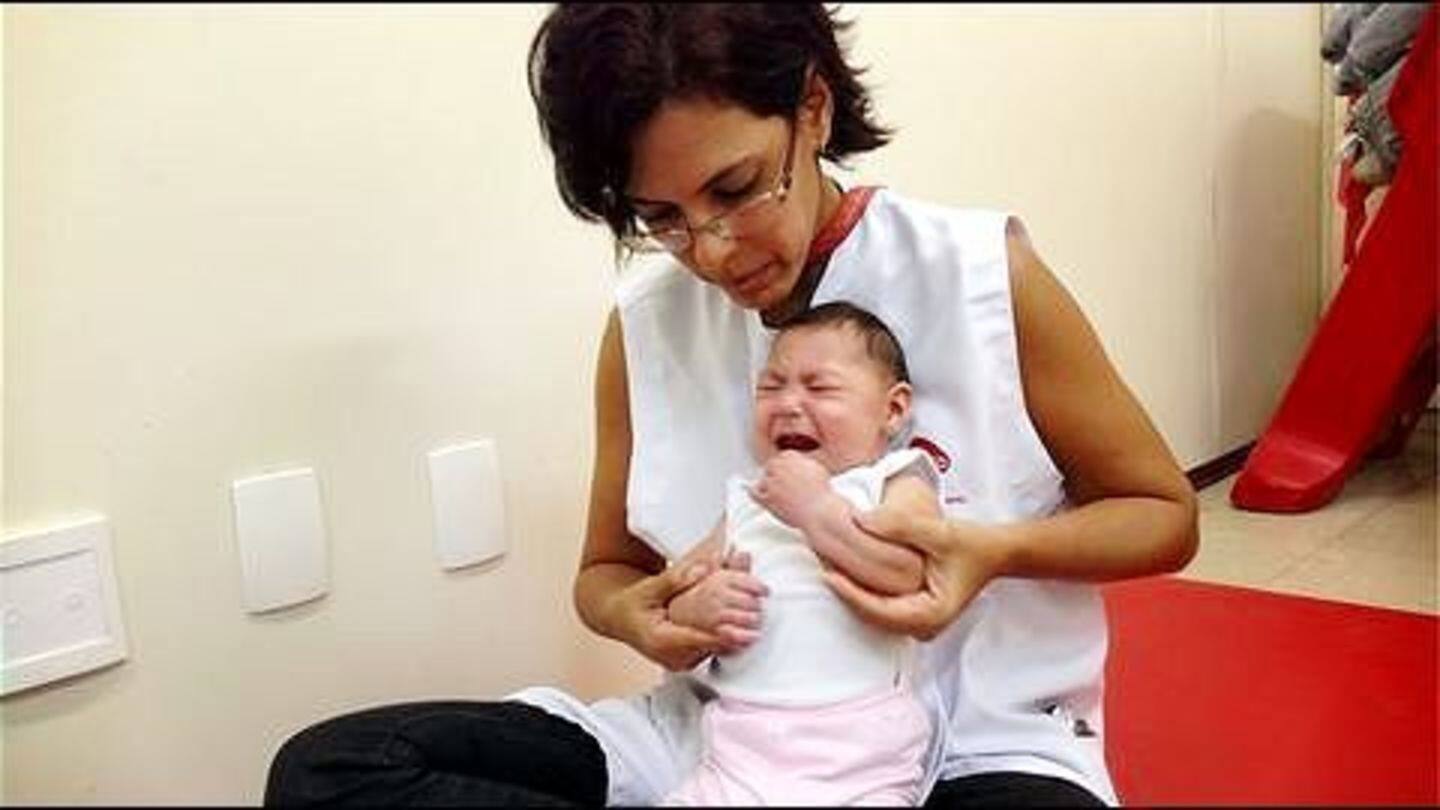
Zika virus in US: 5% women had babies with defects
What's the story
Five percent of pregnant women with Zika virus infection in the United States had fetus or babies with related birth defects, including microcephaly, according to a US government health report.
The report was prepared by US Centers for Disease Control and Prevention.
It covered territories of Guam, the US Virgin Islands, American Samoa, Micronesia, the Republic of Marshall Islands, and Puerto Rico.
Quote
Must remain vigilant: CDC Acting Director
Centers for Disease Control and Prevention Acting Director Anne Schuchat stated: "Women in the US territories and elsewhere who have continued exposure to mosquitoes carrying Zika are at risk of infection. We must remain vigilant and committed to preventing new Zika infections."
Findings
CDC reveals numbers of Zika birth defects
Experts at CDC said the findings are consistent with previous findings of Zika cases in the US.
However, the report found the rate of birth defects in pregnant women with confirmed Zika infection, during the first trimester, was slightly higher at 8% or one in 12.
The CDC report is the first based on US territories' data and the largest of its kind.
Birth Defects
CDC finds over 100 infants with Zika-associated defects
The study was conducted on 2,549 women with possible Zika infection who completed their pregnancies.
Among them, 1,508 had confirmed infection from 1 January 2016-25 April 2017.
122 pregnancies had resulted in Zika-related birth defects, including babies born with small heads, an irreversible condition called microcephaly.
Other birth complications included seizures, problems with movement, coordination, eating, and near constant crying.
Zika Virus
Pregnant women urged to avoid Zika-affected areas
Zika virus can be spread by the bite of infected mosquitoes or sexual contact.
Pregnant women are advised to avoid Zika-affected areas as it is dangerous for them and their fetuses as well.
While Zika often causes no symptoms in adults, it may lead to fever, itchy rash, joint pains, and red eyes.
Birth defects include neural tube defects, eye abnormalities, and microcephaly.
Quote
Presence or absence of symptoms
Dr. Laura Riley, a specialist in high-risk pregnancies and infectious disease at Massachusetts General Hospital, stated: "The presence or absence of symptoms was not predictive of whether a baby would be damaged. There were women who had asymptomatic Zika whose babies were damaged."
Zika Outbreak
Zika epidemic remains a challenge, warns WHO
Zika erupted on a huge scale in mid-2015, impacting around 70 countries.
Over 1.5 million were infected, mostly in Brazil and other South American countries.
However, in Nov'16, the World Health Organization announced the outbreak was no longer a world public health emergency but remains a challenge.
Former CDC Director Dr. Tom Frieden said, "It may not be epidemic anymore, but it's endemic."